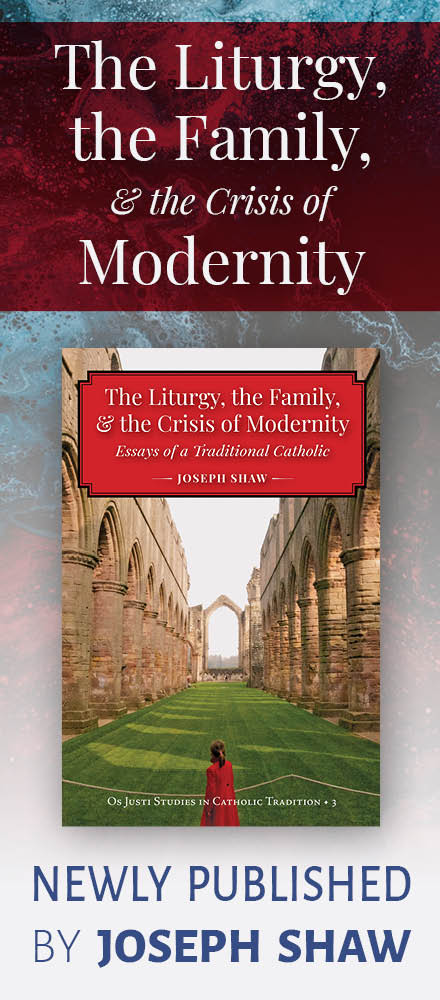The Holy Father spoke to a group of priests in Brixen on the 6th of August. In that discussion, the Pope discussed the importance of beauty through art and through music.
Here is a transcript of that excerpt of the question and answer session, provided by Sandro Magister:
Q: Holy Father, my name is Willibald Hopfgartner, and I am a Franciscan. In your address in Regensburg, you emphasized the substantial connection between the divine Spirit and human reason. On the other hand, you have also always emphasized the importance of art and beauty. So then, together with conceptual dialogue about God in theology, should there not always be a new presentation of the aesthetic experience of the faith within the Church, through proclamation and the liturgy?
A: Yes, I think that the two things go together: reason, precision, honesty in the reflection on truth, and beauty. A form of reason that in any way wanted to strip itself of beauty would be depleted, it would be blind. Only when the two are united do they form the whole, and this union is important precisely for the faith. Faith must constantly confront the challenges of the mindset of this age, so that it may not seem a sort of irrational mythology that we keep alive, but may truly be an answer to the great questions; so that it may not be merely a habit, but the truth, as Tertullian once said.
In his first letter, St. Peter wrote the phrase that the medieval theologians took as the legitimization, almost as the mandate for their theological work: "Always be ready to give an explanation to anyone who asks you for a reason for your hope" – an apologia for the "logos" of hope, meaning a transformation of the "logos," the reason for hope, into an apologia, an answer addressed to men. He was clearly convinced of the fact that faith is "logos," that it is a form of reason, a light issuing from the creating Light, and not a hodgepodge resulting from our own thought. This is why it is universal, and for this reason it can be communicated to all.
But this creating "Logos" is not a merely technical "logos." It is broader than this, it is a "logos" that is love, and therefore to be expressed in beauty and goodness. And in reality, for me art and the saints are the greatest apologia for our faith.
The arguments presented by reason are absolutely important and indispensable, but there always remains some disagreement somewhere. If, instead, we look at the saints, this great luminous arc that God has set across history, we see that here there is truly a power of goodness that lasts over the millennia, here there is truly light from light.
And in the same way, if we contemplate the created beauties of the faith, these simply are, I would say, the living proof of faith. Take this beautiful cathedral: it is a living proclamation! It speaks to us on its own, and beginning with the beauty of the cathedral we are able to proclaim in a visible way God, Christ and all of his mysteries: here these have taken shape, and are gazing back at us. All of the great works of art, the cathedrals – the Gothic cathedrals, and the splendid Baroque churches – all of them are a luminous sign of God, and therefore truly a manifestation, an epiphany of God.
Christianity involves precisely this epiphany: that God has become a veiled Epiphany, he appears and shines. We have just listened to the sound of the organ in all its splendor, and I think that the great music born within the Church is an audible and perceptible rendering of the truth of our faith: from Gregorian chant to the music of the cathedrals to Palestrina and his era, to Bach and then to Mozart and Bruckner, and so on... Listening to all of these great works – the Passions by Bach, his Mass in B minor, and the great spiritual compositions of 16th century polyphony, of the Viennese school, of all of this music, even by minor composers – suddenly we feel: it is true! Wherever things like these are created, there is Truth.
Without an intuition capable of discovering the true creative center of the world, this beauty cannot be created. For this reason, I think that we must always act in such a way that these two things go together, we must present them together. When, in our own time, we discuss the reasonableness of the faith, we are discussing precisely the fact that reason does not end where experimental discoveries end, it does not end in positivism; the theory of evolution sees the truth, but sees only half of it: it does not see that behind this is the Spirit of creation. We are fighting for the expansion of reason, and therefore for a form of reason that, exactly to the point, is open to beauty as well, and does not have to leave it aside as something completely different and irrational.
Christian art is a rational form of art – we think of Gothic art, great music, or the Baroque art right here – but this is the artistic expression of a much broader form of reason, in which the heart and reason come together. This is the point. This, I think, is in some way the proof of the truth of Christianity: the heart and reason come together, beauty and truth touch. And to the extent that we are able to live in the beauty of truth, so much more will faith again be able to be creative, in our own time as well, and to express itself in a convincing artistic form.




















